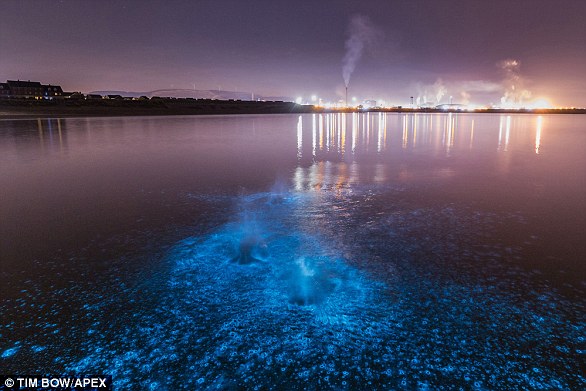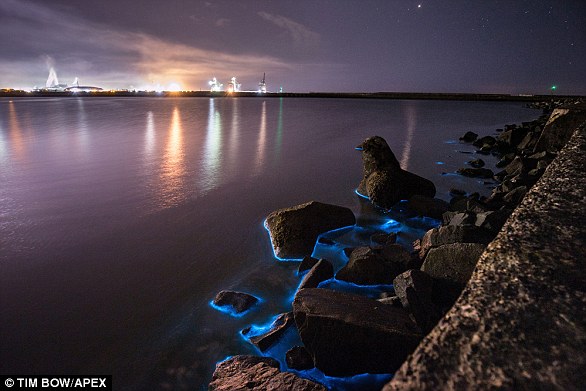Incredible moment California boogie boarders surf on bright blue bioluminescent waves caused by neon-colored plankton that live just off the coast
Incredible moment California boogie boarders surf bright blue bioluminescent waves caused by neon-colored plankton living just offshore
- A photographer captured the mesmerizing spectacle of bioluminescent plankton lighting up a California beach with a brilliant blue glow
- Bioluminescence is a relatively common phenomenon in the state, often associated with marine life in the glowing waters
- Patrick Coyne specializes in capturing the captivating bioluminescent scenes on film and has now documented surfers enjoying the luminous display
A photographer has captured bioluminescent plankton lighting up a California beach with a bright blue glow as boogie boarders ride the waves.
Bioluminescence is a phenomenon that is quite common in the state and is often attributed to sea creatures frolicking in the illuminated waters.
But photographer Patrick Coynewho specializes in portraying the mesmerizing bioluminescent scenes on film, has captured photos and videos of surfers splashing around in the luminous spectacle.
A group of surfers grabbed their boogie boards in Huntington Beach and took to the open water to experience the glow of the Pacific Ocean for themselves.
“The bio continues to give us a great show and we captured more footage at Salt Creek Beach! We originally stopped at Crescent Bay where there were some glowing waves, but they weren’t very clear so we checked out other beaches,” Coyne wrote on Instagram.
A photographer has captured bioluminescent plankton lighting a California beach with a bright blue glow as boogie boarders ride the waves
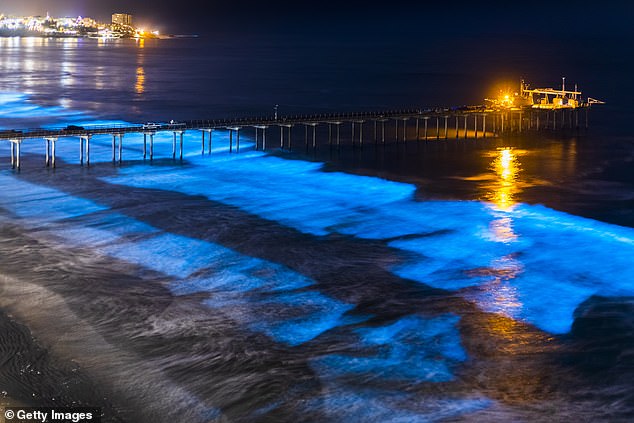
Waves glow blue at night around the Scripps Institute of Oceanography pier in San Diego
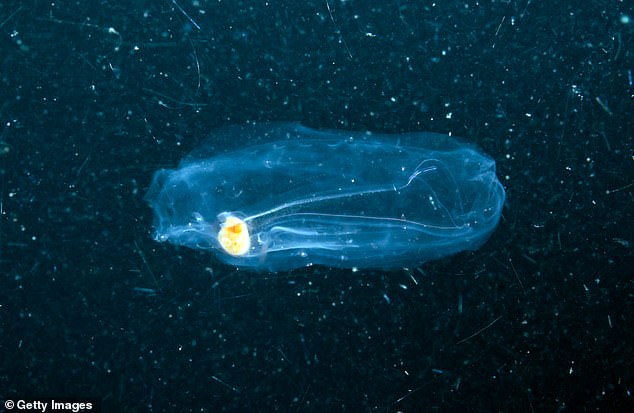
The mesmerizing light is generated by a species of plankton known as Lingulodinium polyedra, also called L. poly.
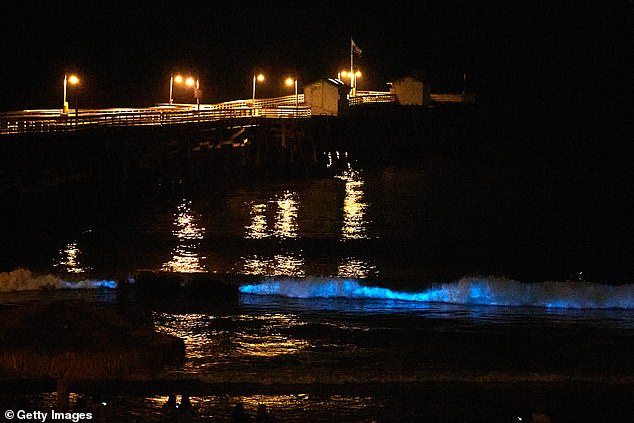
A bioluminescent wave crashes onto the shore next to the San Clemente Pier
The mesmerizing light is generated by a species of plankton known as Lingulodinium polyedra, also called L. poly.
Scientists believe the bioluminescent phenomenon results from the disruption of plankton, causing it to emit light through a complex chemical reaction.
Organisms such as plankton, fireflies and anglerfish can glow by releasing the chemical luciferin, which reacts with oxygen to create light.
The glowing effect, often called ‘the fire of the sea’, results in a distinctive blue flash that lasts just 100 milliseconds.
‘It’s been a while since we’ve seen this phenomenon here, but this time the waves were exceptionally clear. The beach was full of people enjoying the spectacle, and we all had a great time,” Coyne said KTL.
Coyne had previously shared videos of dolphins jumping for joy in the neon surf at Newport Beach in 2020, and in 2022 he photographed a pod of mullet fish frolicking in the sparkling water.
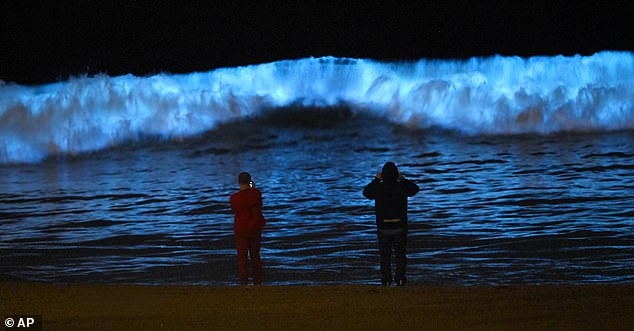
From San Diego to Los Angeles, Californians watched the stunning bioluminescent waves crash onto the shore (2020 file photo)
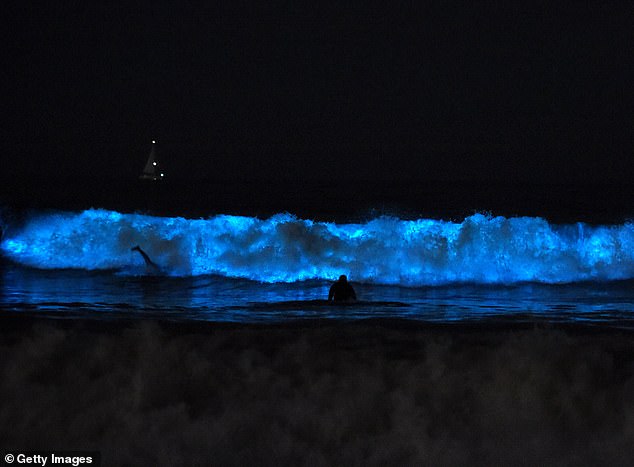
The glowing effect, often called ‘the fire of the sea’, is produced by microscopic, single-celled organisms
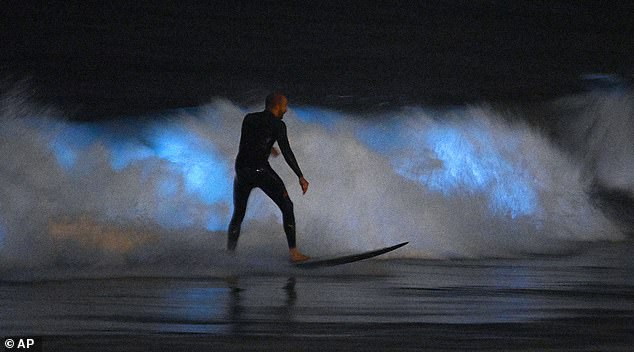
A group of surfers grabbed their boogie boards in Huntington Beach and took to the open water to experience the glow of the Pacific Ocean for themselves
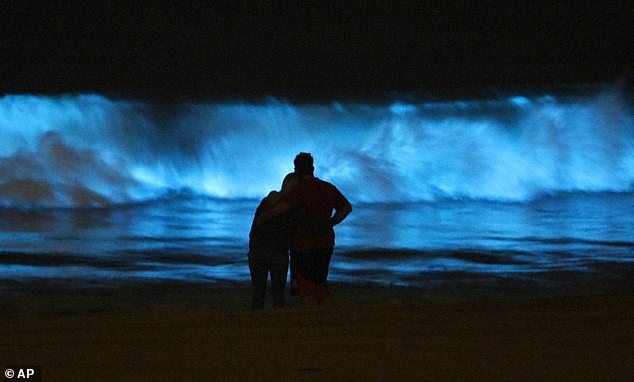
Spectators watch bioluminescent plankton light up the shoreline as they toss in the waves at Dockweiler State Beach in Los Angeles, California (photo in 2020)

